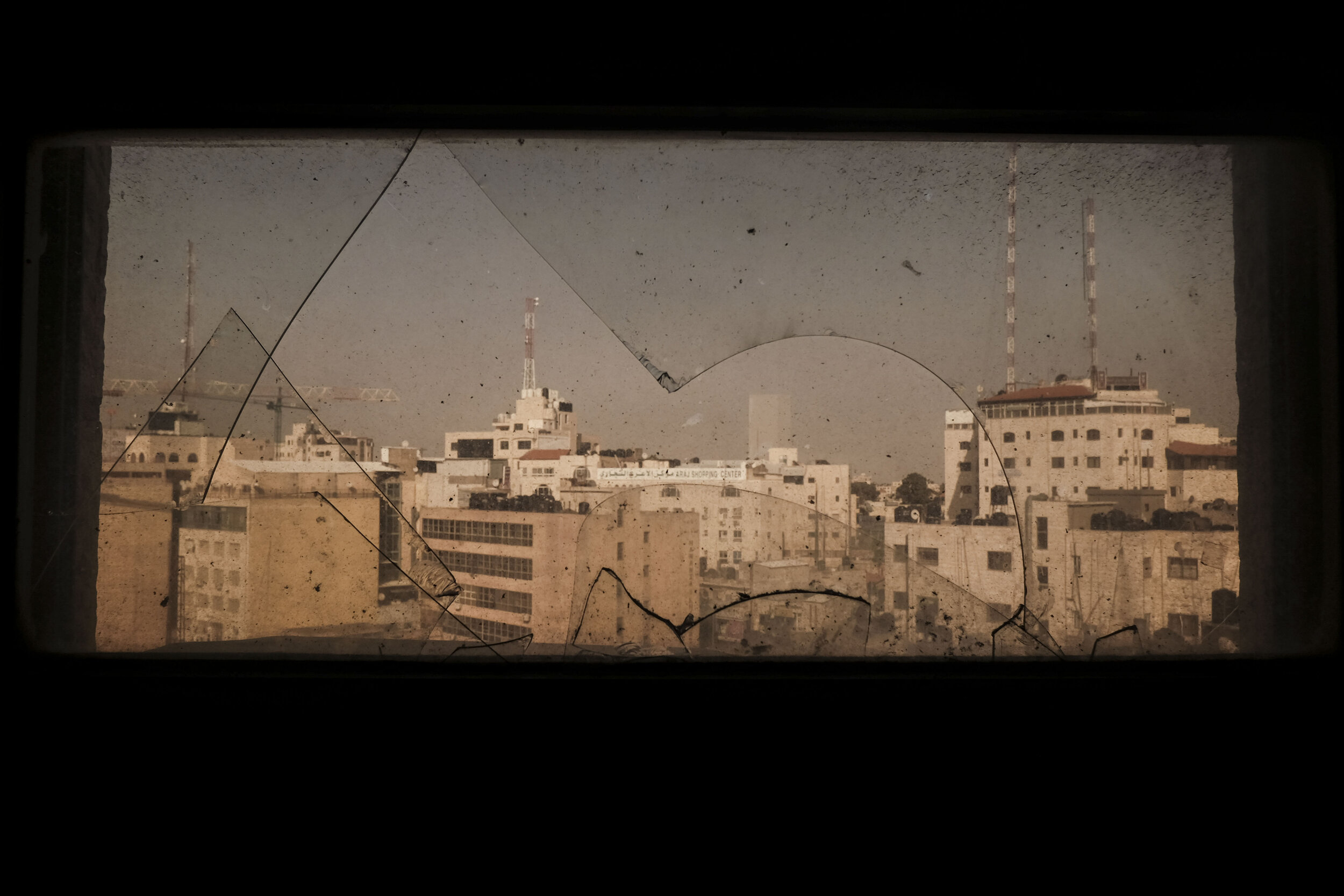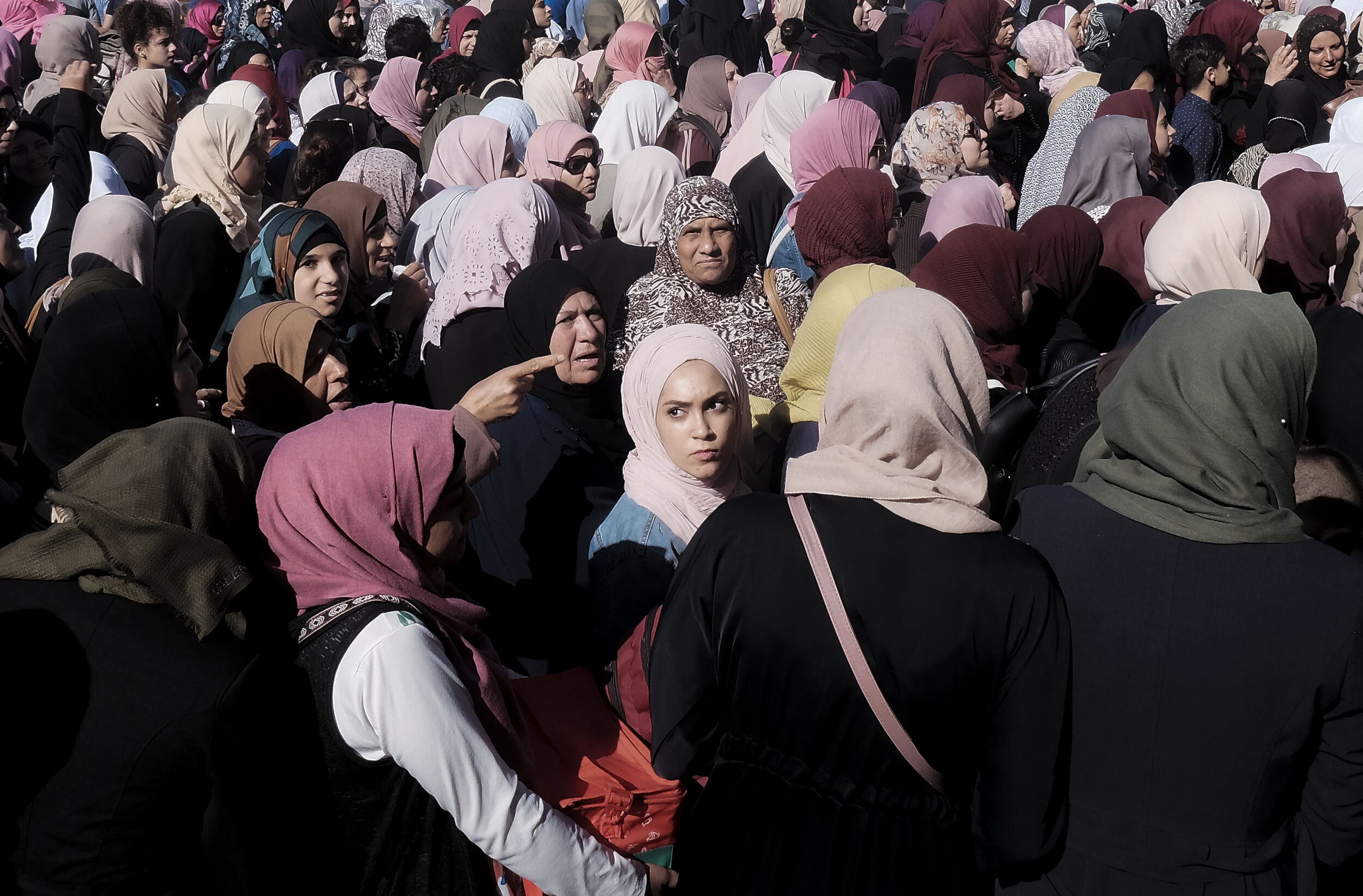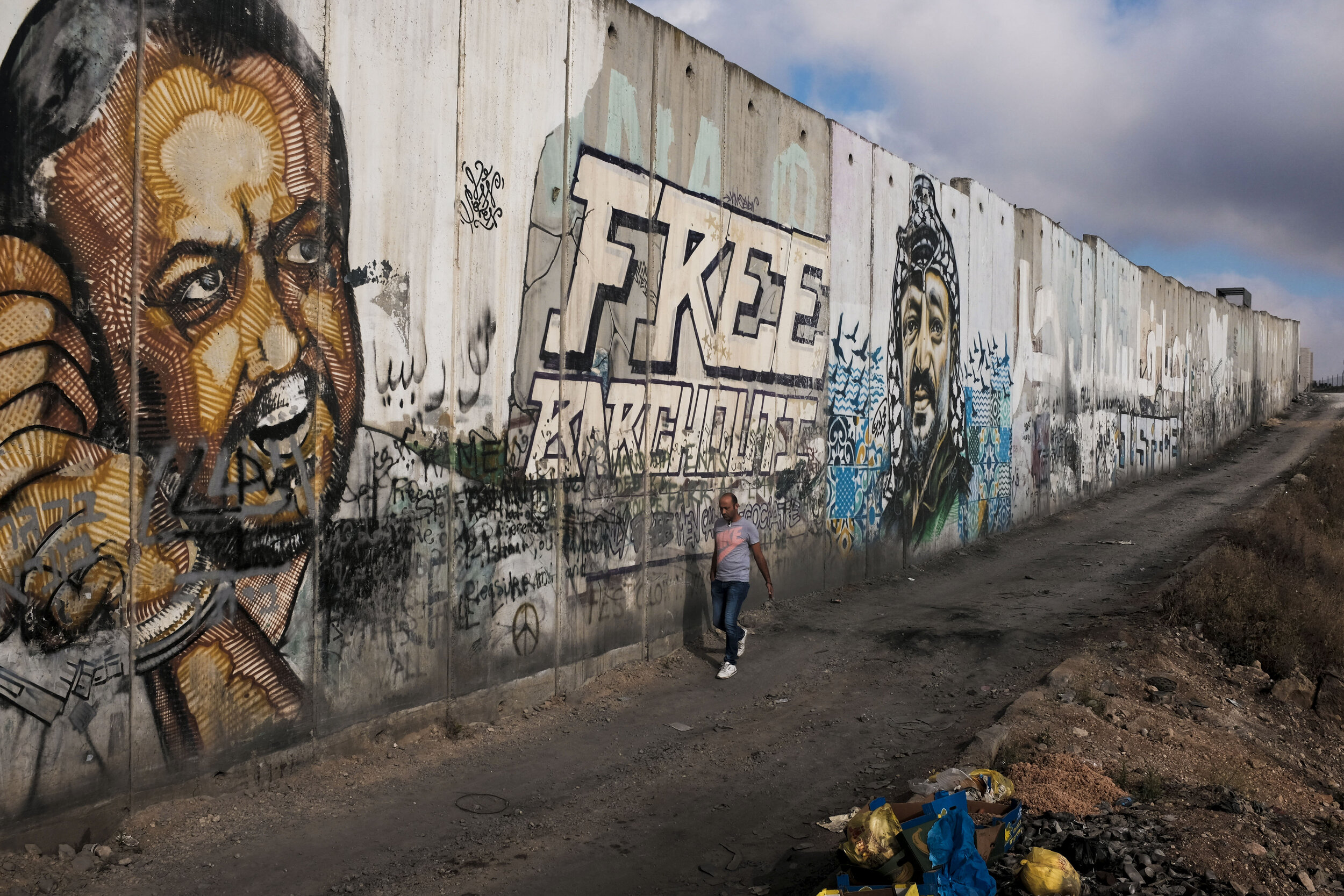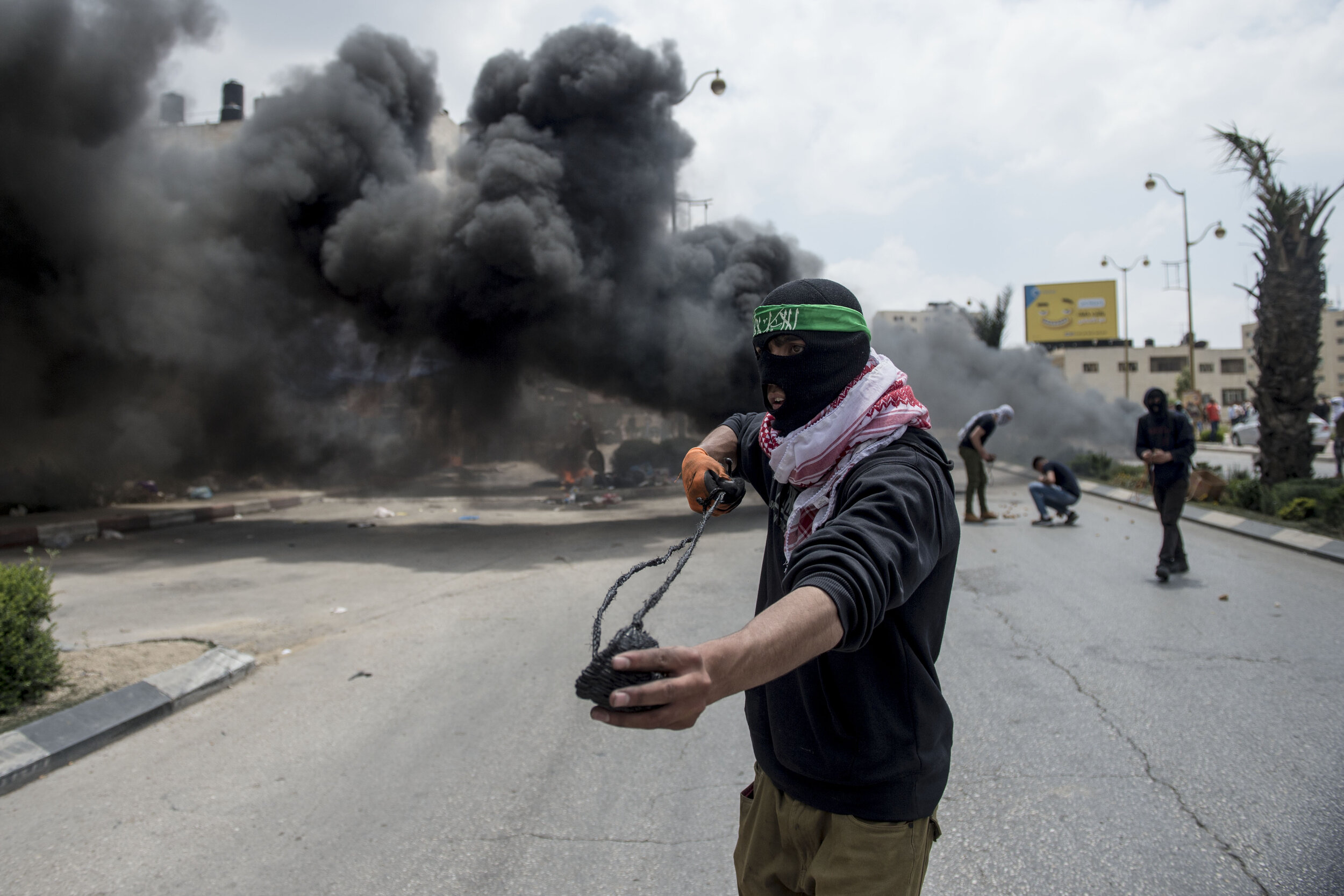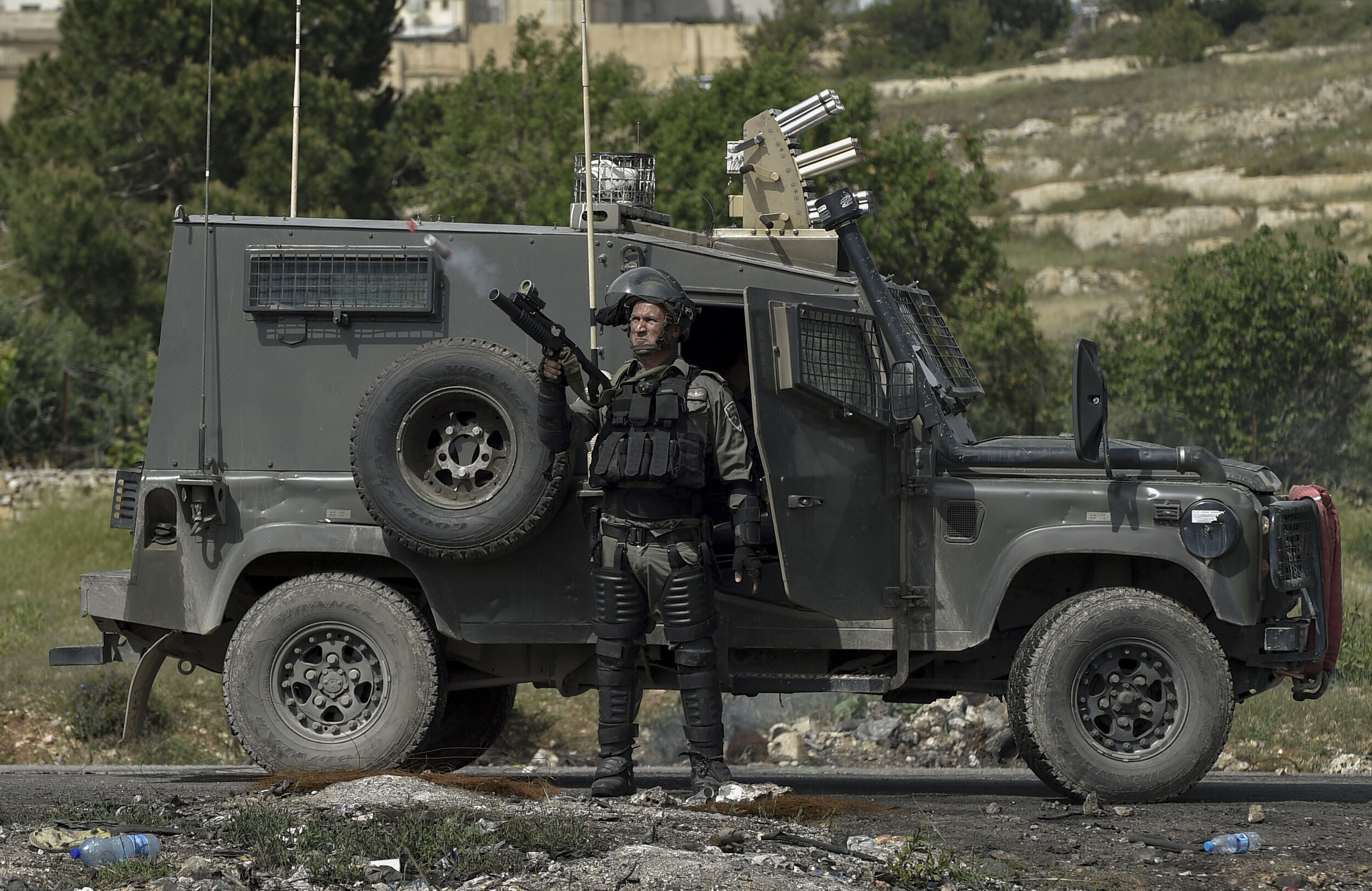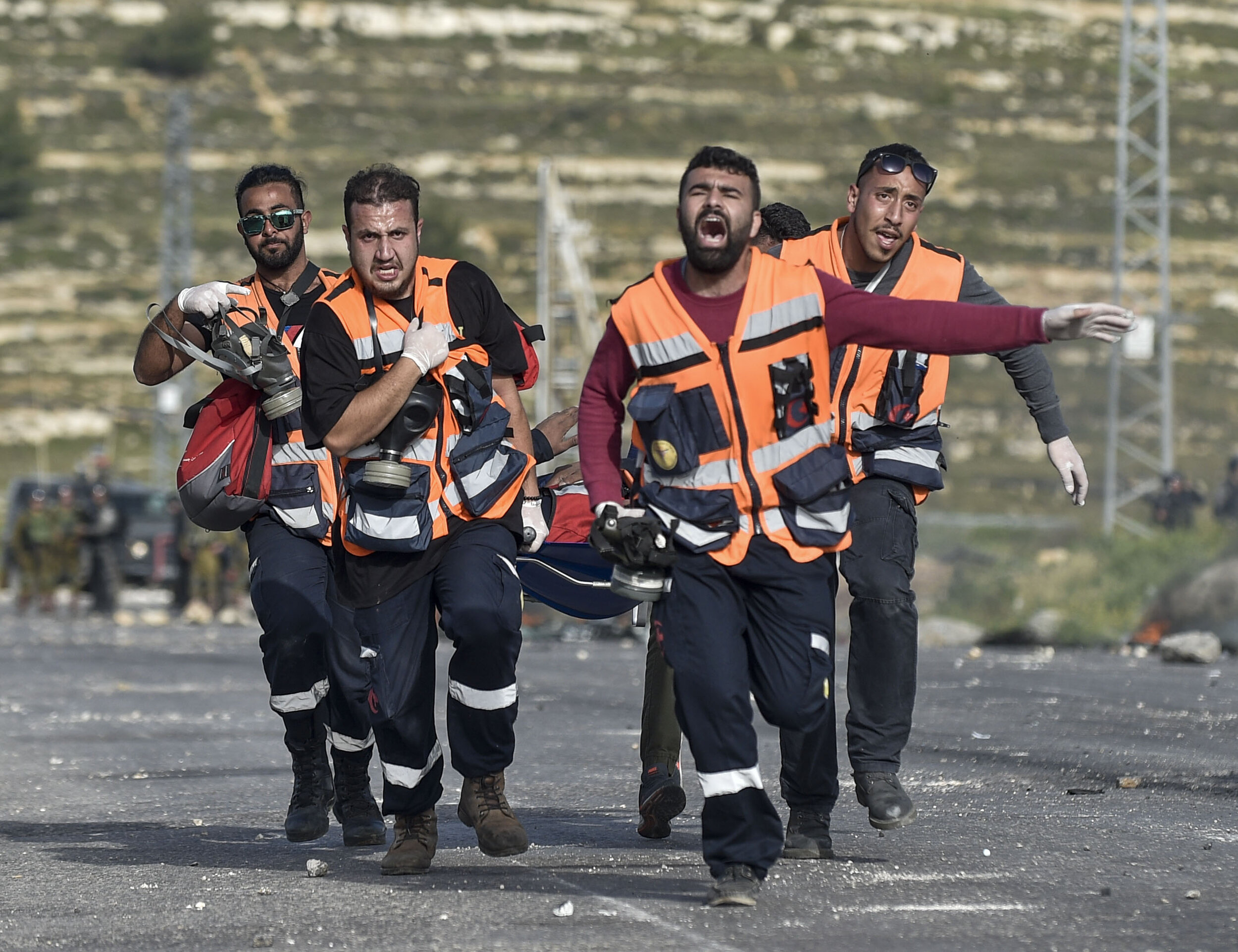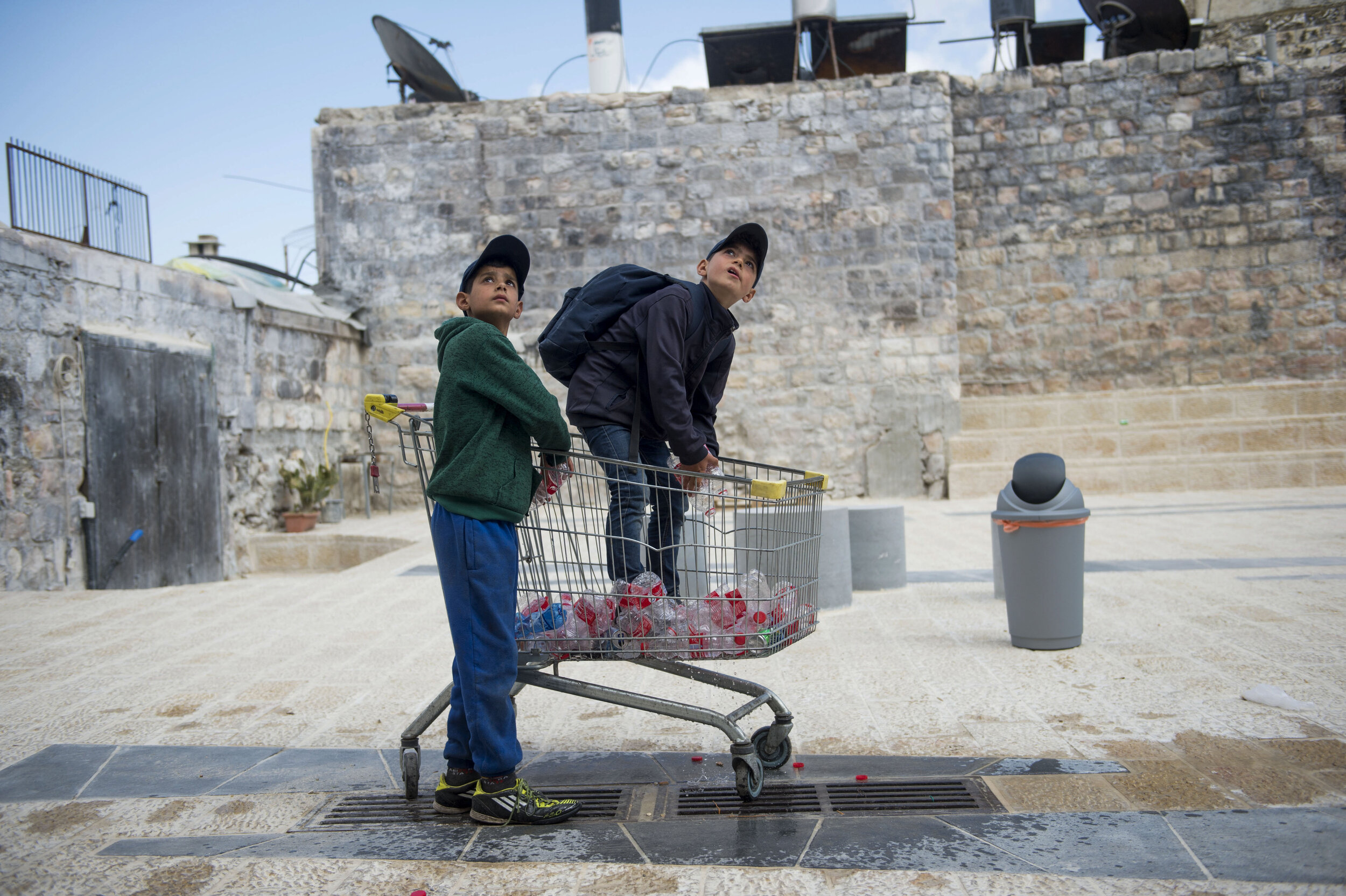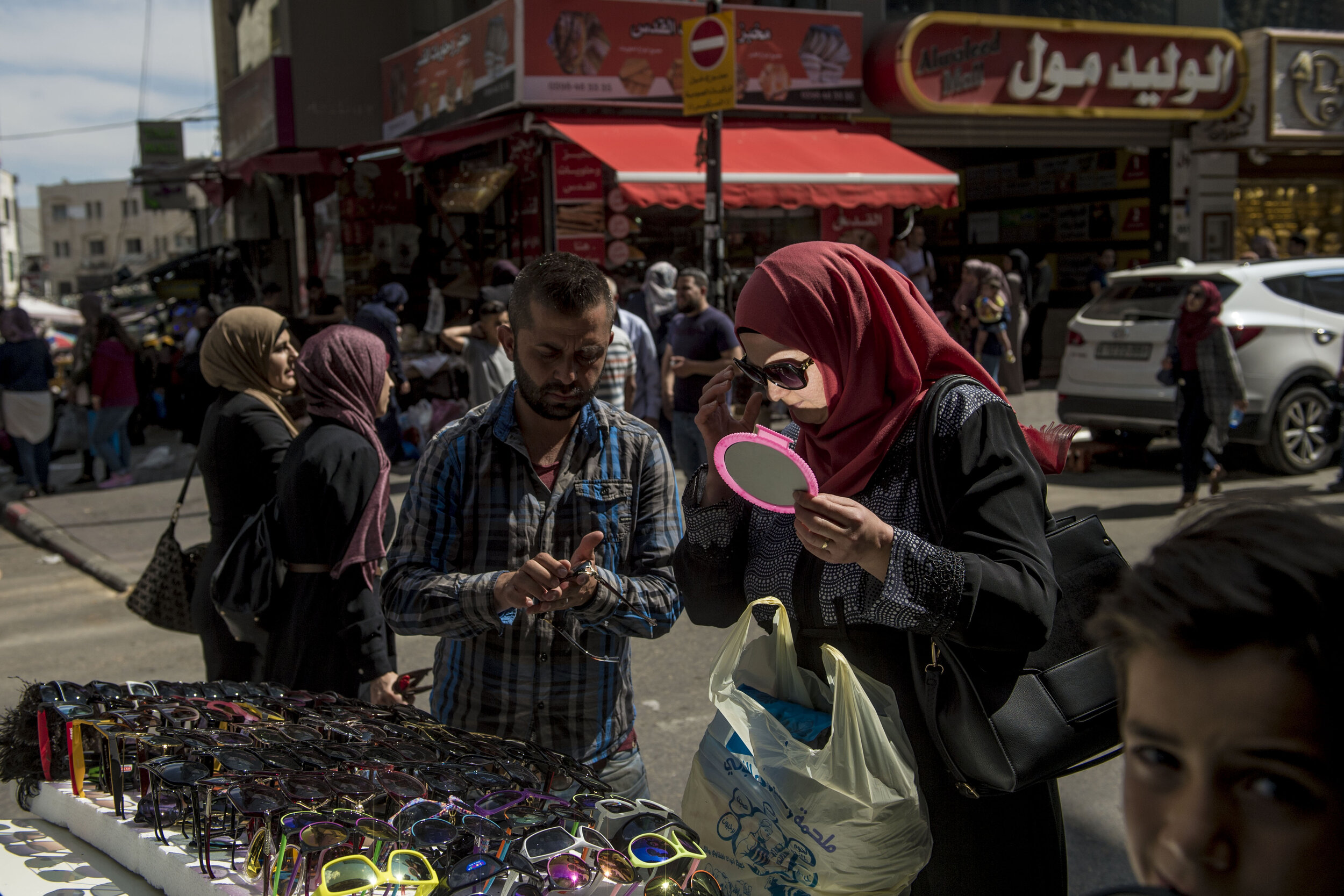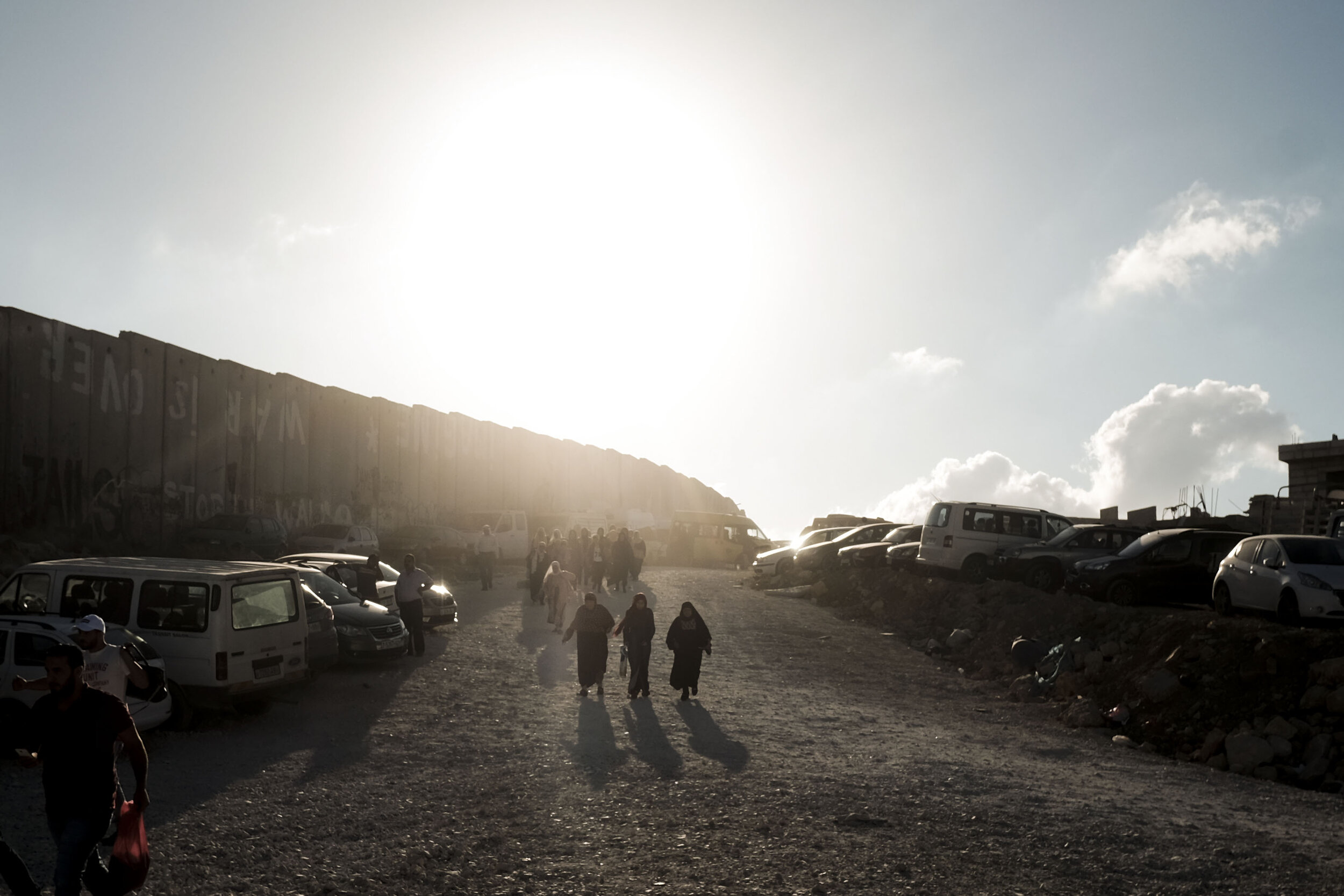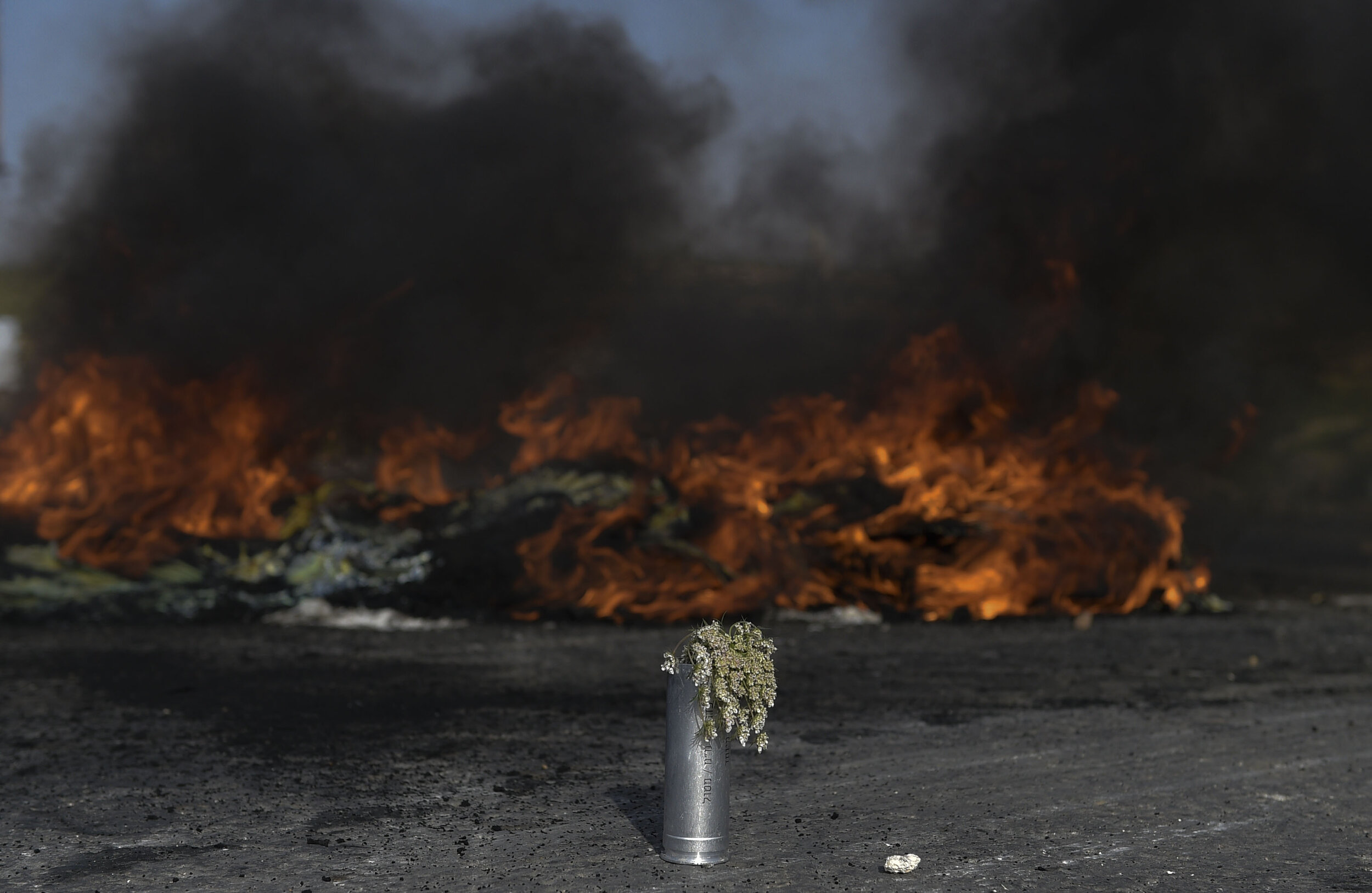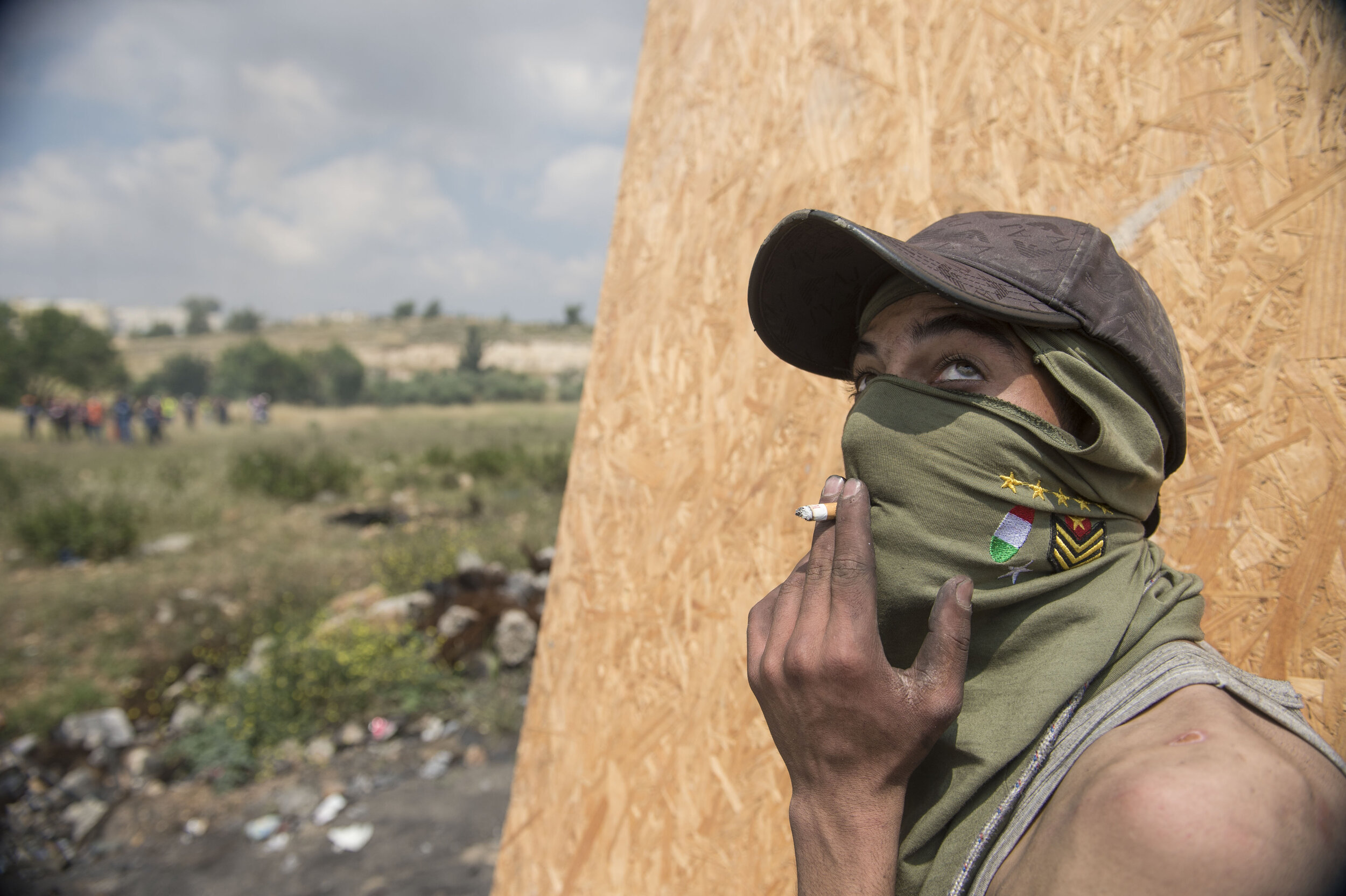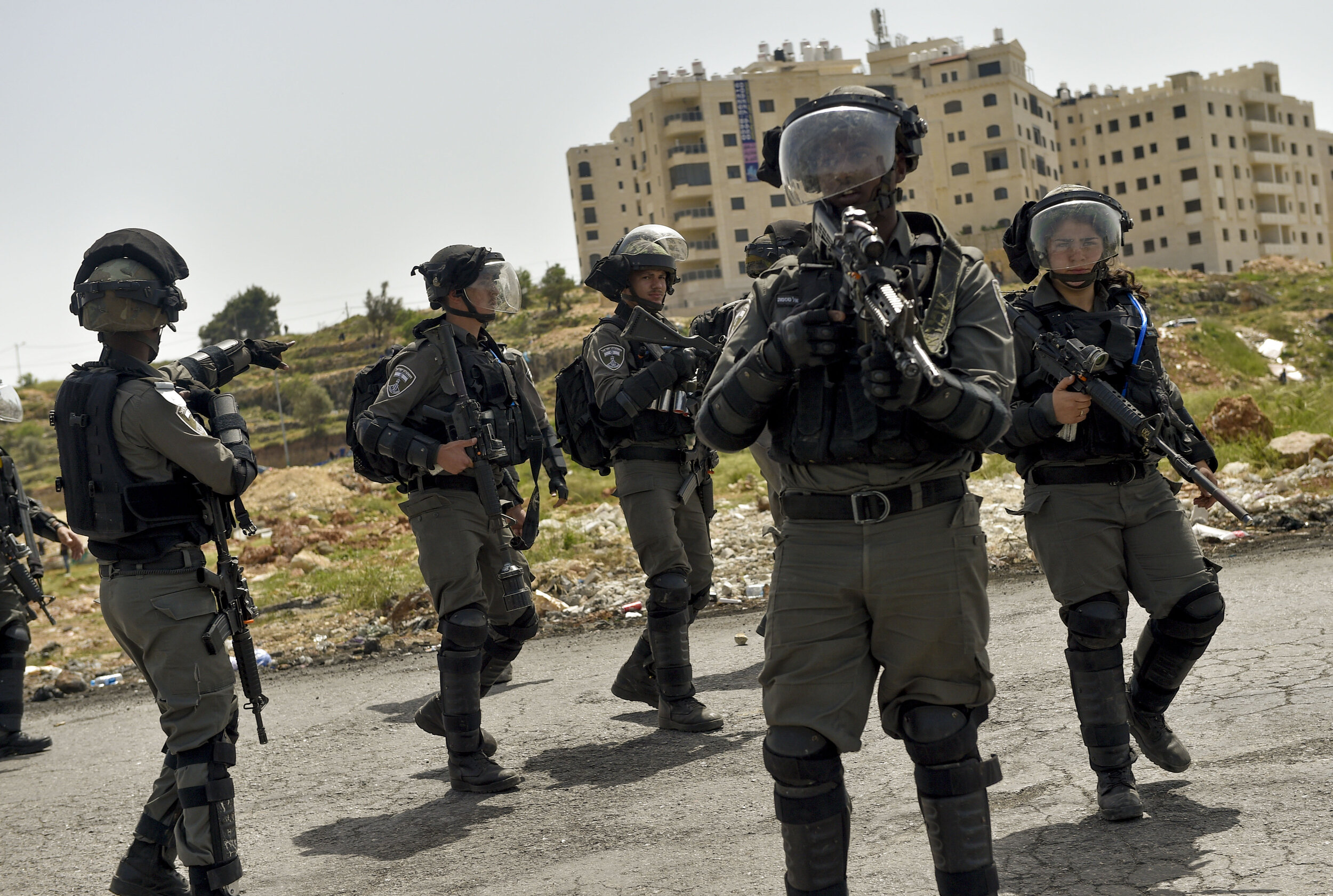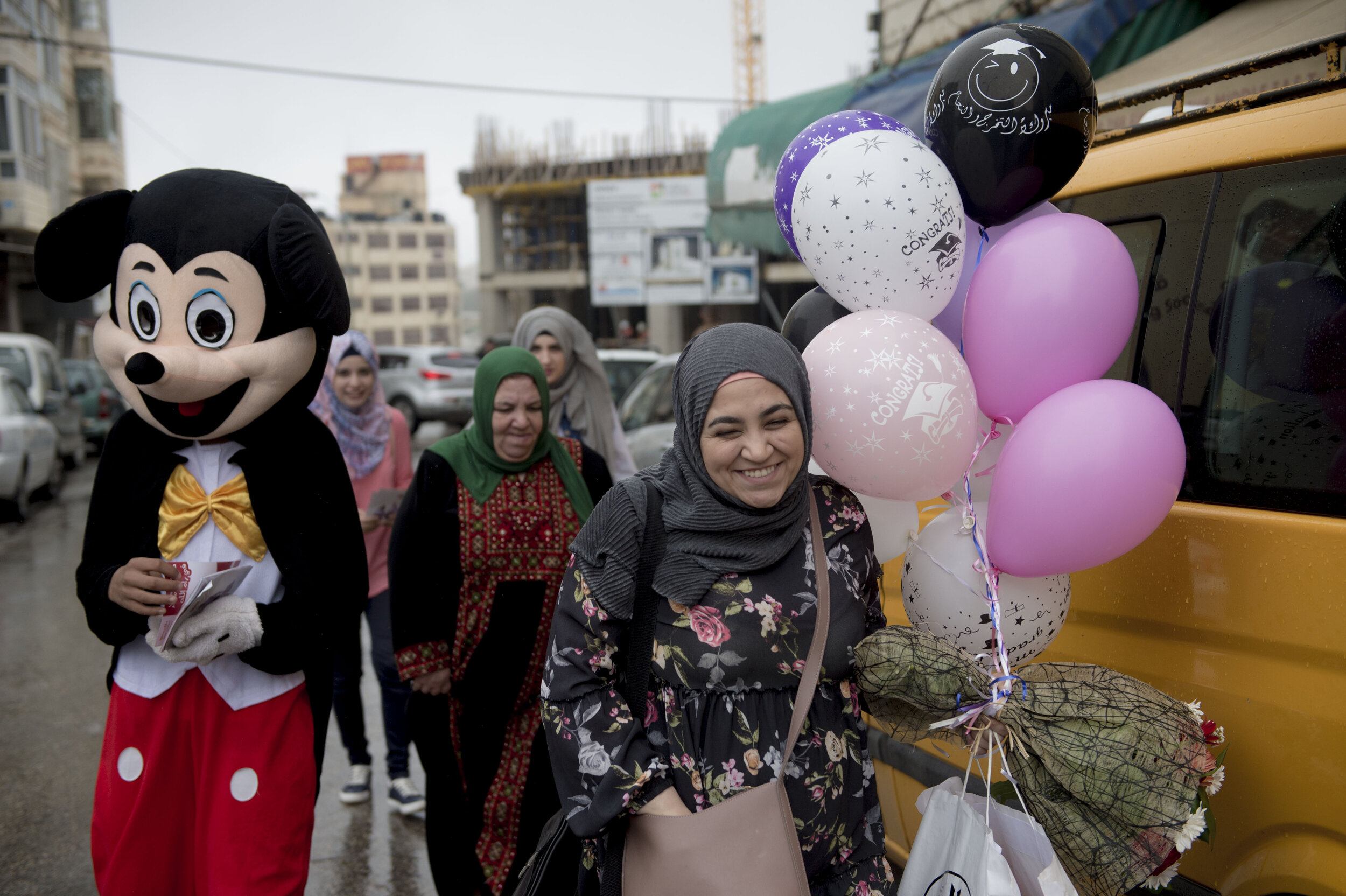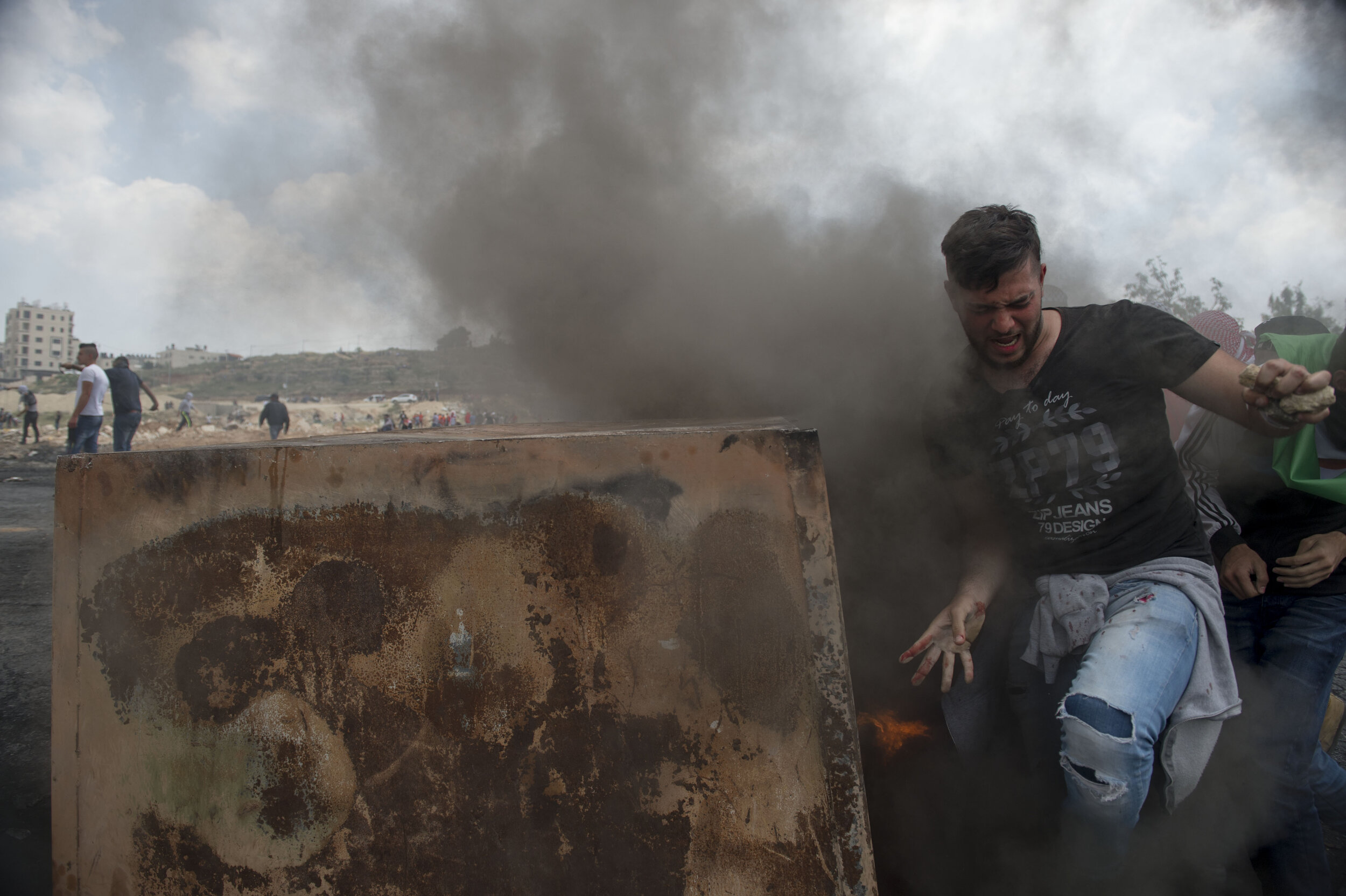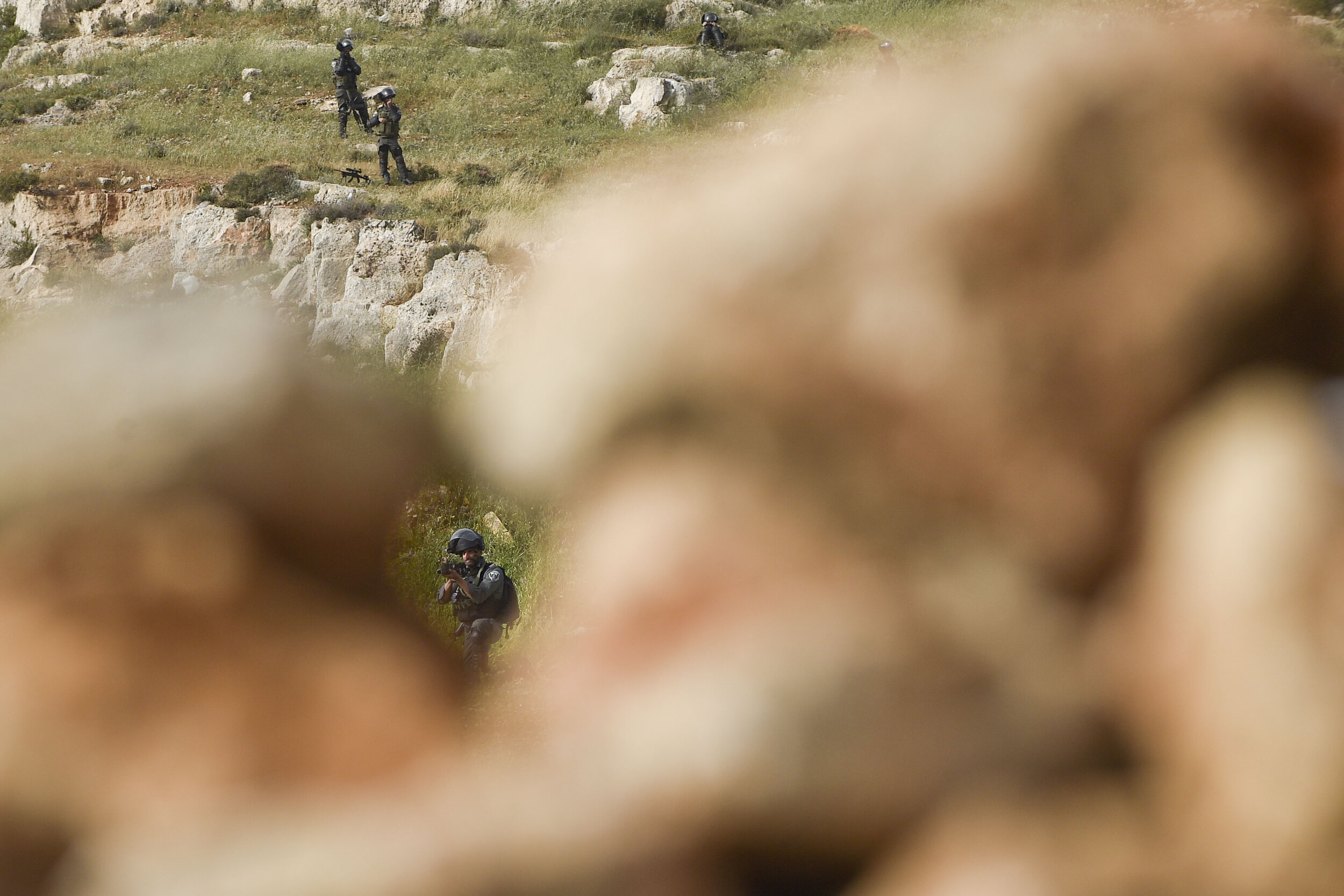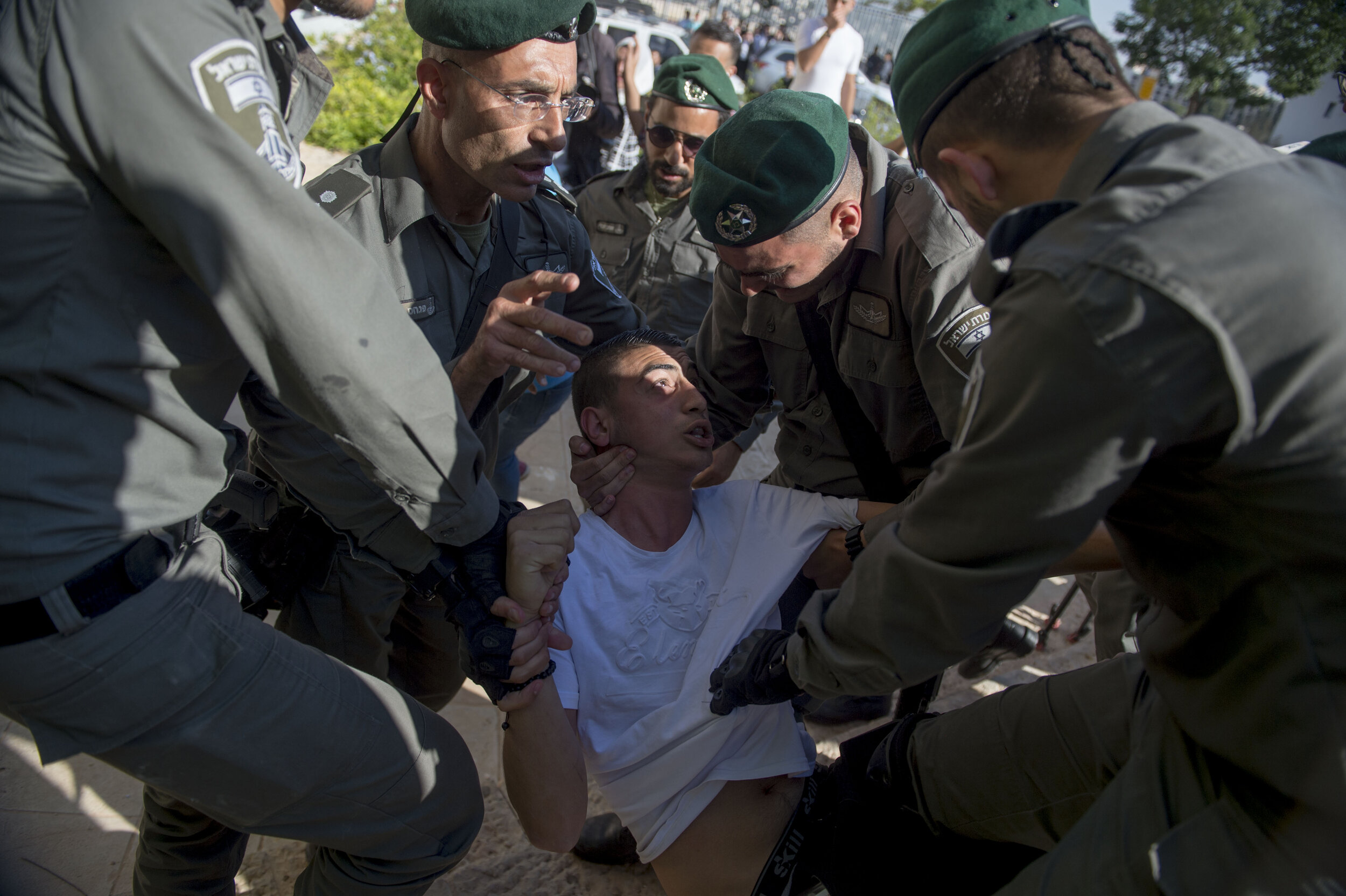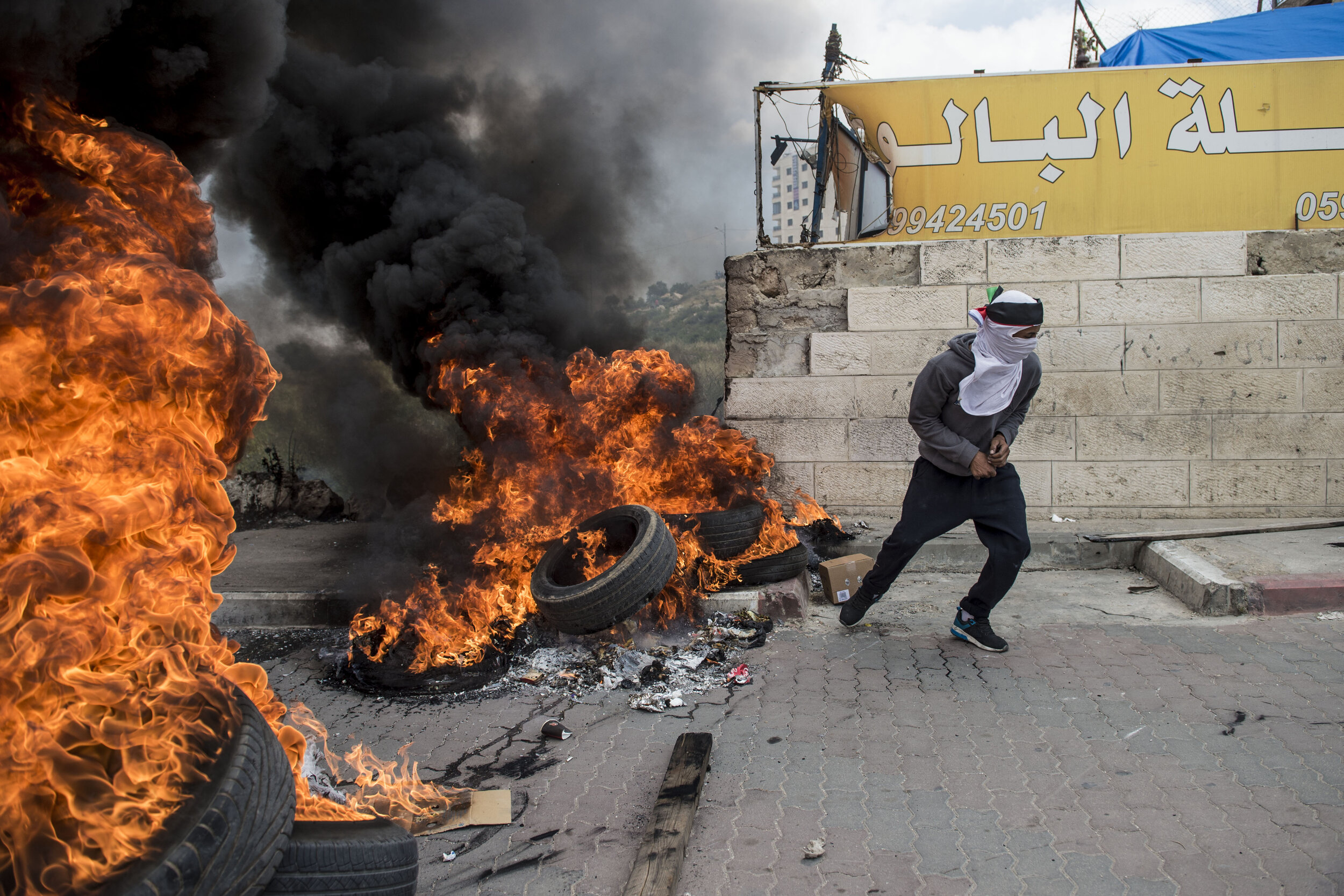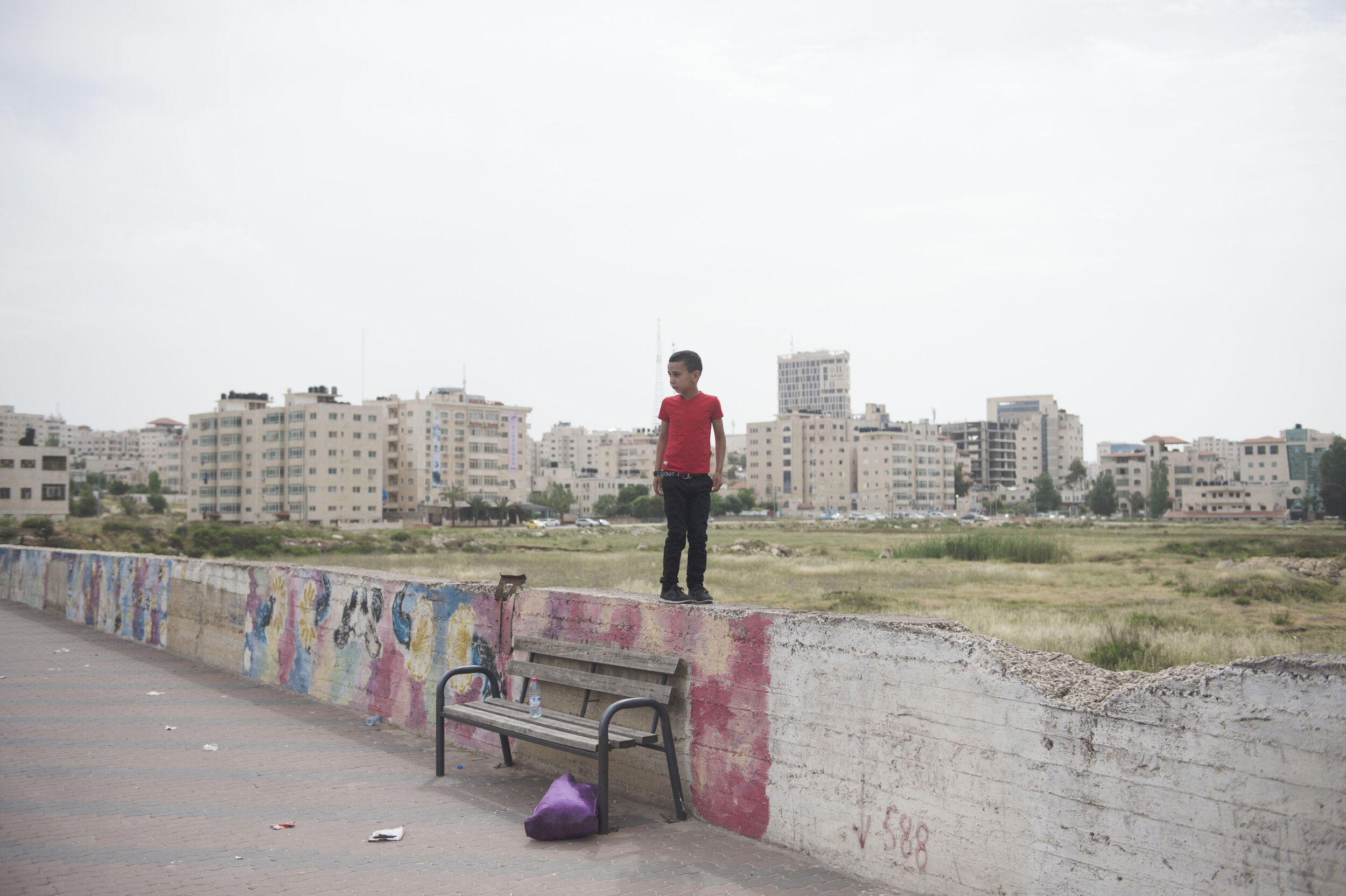THE OCCUPIED WEST BANK
Through the glassless windows and cool shadows of the skeletal structures that may someday be apartment buildings, the vast desert landscape that is the canvas of the West Bank stretches far to the horizon, where the mountains and valleys melt with the brilliant blue sky into a grey haze. On the streets of Ramallah, where peanut shells and other lose debris crunch under foot, the city is alive and colorful, beneath the blistering sun and the dry dry air. Merchants sit behind their counters in the endless rows of stores that line every street, children pull at their parents’ arm in hopes of persuading them to take them into a toy or candy store, old men sit in the cool shade of the buildings and awnings and sip cups of coffee as faint whips of smoke from cigarettes escape their lips. At the heart of the West Bank, despite the paintings and posters of martys, despite the settlements that loom on hilltops on the edge of the cities, that dot the desert landscape like sores, life in the West Bank rolls forward with a strange kinetic energy. Under the thumb of the Israeli occupiers, life and the old traditions of this land have changed. Gone are the days of agriculture, a new sense of capitalism and commercialism has taken hold in cities like Ramallah and Nablus. The shepherds still tend to their flock, yet rather than surrounded by pasture and mountains, they are found in the small green spaces between high rise apartment buildings and busy roads. Beneath the calming wave of daily life a tension sits like a thick mist over the land, there are whispers of change coming, whispers that float like phantoms through the empty buildings and crowded streets. Whispers that on quiet nights, when Manara square is empty, and the city market is silent, weigh heavily on the chests of the Palestinians.
